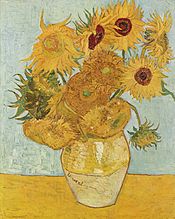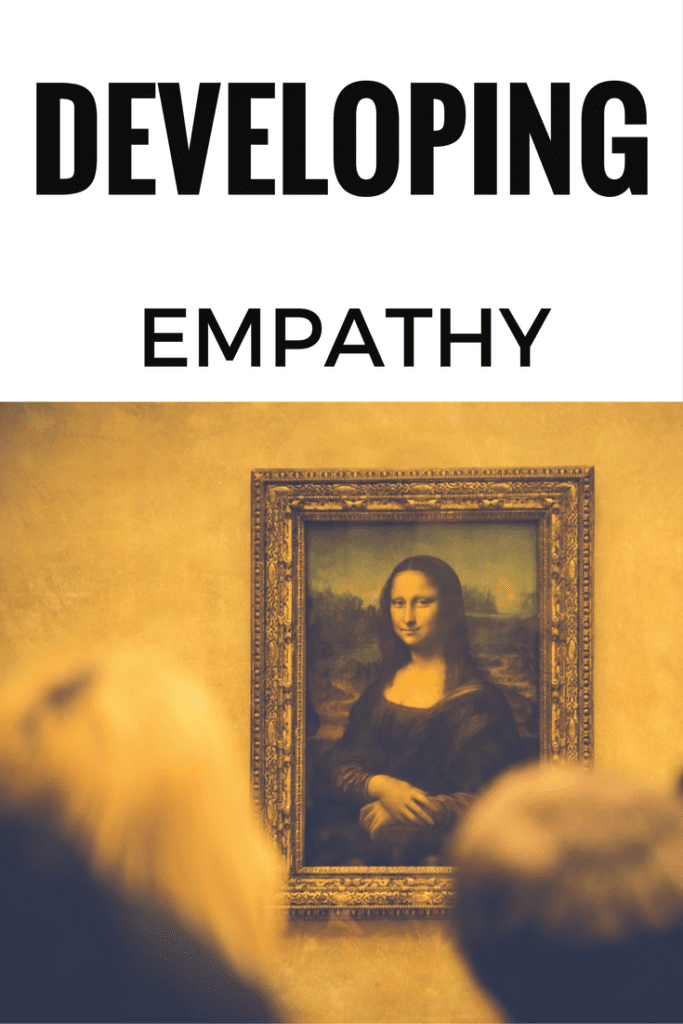Helping Students Understand Content and Context in Art History
Previously, when teaching Art History, students were often confused about the idea of content and context and how it relates to works of art. This year I develop 3 new exercises to walk them through, and now they are understanding it like nobodies business!!!!
Here is the video that walks students through the 3 exercises, and you can find some student examples below.
Grab the slides :the-importance-of
Student examples:
I chose the Sunflowers of Vincent Van Gogh. I never really got why they were so popular.
The paintings are all 92.1cm x 73cm (36.2in x 28.7in) and oil on canvas. With a yellow colour scheme.
Van Gogh painted the paintings when he was in Provence (1888-9) to decorate the room of Paul Gauguin, who was coming to live with him. Both were artists who had very little money, they needed each other for rent, and other necessities.
The yellow colouring of the painting was to symbolize the happy and the sunny Province, to make the bedroom of Gauguin more welcoming. Van Gogh and Gauguin started to argue and shortly there after Gauguin departed from Province, and Van Gogh suffered form a mental break down. Vincent returned to the sunflower motif, but they started to wilt
This is not apparent when you look at the flowers one by one or on paper, but I went to an exhibition in London (National Gallery, April 2014) and saw four of the paintings together. At first when you walk into the room I saw bright and blooming sunflowers but as I progressed onwards the aura in the room changed to that of grief and despair. You wouldn’t think that paintings in a blank room with no special lighting could instigate such a feeling.
After my visit and after I read the tale behind the paintings I started to appreciate them more and more. How they went from happy and friendly to empty flower skulls on sticks, without being obvious.

I chose Bicycle Wheel by Marcel Duchamp. It’s dimensions are 4′ 3″ x 2′ 1″ x 1′ 4″ and is, unsurprisingly, composed of a kitchen stool and a bike tire.
When a first saw this piece, I genuinely did not (and, to some degree, still do not) understand why it is classified as art. My best guess as to why someone took the time and energy to combine a stool and a wheel is that the piece is simple and the objects are ordinary, but it makes you stop and think about it’s purpose. I suppose that’s why art is created in the first place. Maybe it is significant purely because someone took the time to create it.
The sculpture was created in 1913 as the first piece in what would later become known as Duchamp’s “readymade” series, where he combined various objects and claimed it was art. Also, the piece has historical significance due to the fact that it was the first kinetic sculpture.
Upon further investigation, I found out that he was apparently sitting in his Paris studio when he decided to create it just because he liked watching the tire spin. Plain and simple. I think this is significant because in 1913, the beginning of WWI had turned ‘plain and simple’ into a luxury. Sitting down and watching a tire spin was a sharp contrast to what was happening in other parts of the world, and even the country.
Additionally, not only did Duchamp bother to make this once, but three times. The original and first recreation were both lost, so the one still around today is the third recreation, made in 1951. Clearly, this piece was important enough to Duchamp for him to create three different versions of it. This leads me to circle back to my original theory, that the intent behind the art was to show how anything is important if someone says that it is. (Or maybe I’m just overanalyzing it, trying to change it into some deep, philosophical statement about humanity.)

